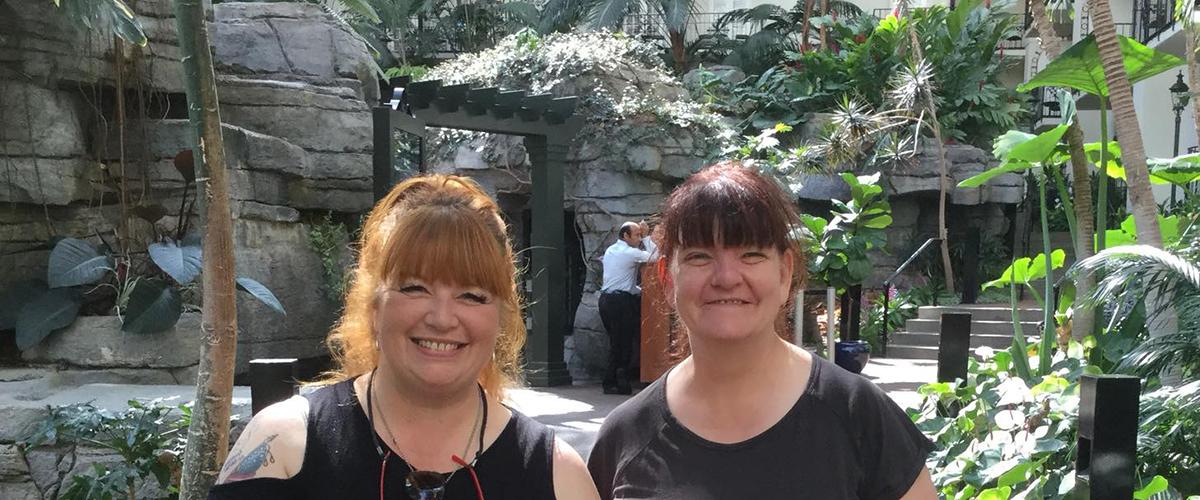When Haukur Svansson began studying neurological disease as part of his work towards an undergraduate degree in psychology at the University of Iceland in Reykjavik, he began to feel ashamed of himself for not knowing more about Vöðva og Spennuvisnun.
“Vöðva og Spennuvisnun" is the Icelandic term for myotonic dystrophy (DM). Haukur’s father is the youngest of six siblings, five of whom have the disease. But the 23-year-old student realized he didn’t know that much about it. He became determined to learn all that he could. What he quickly discovered was that even though he grew up around the disease, he and his family had a poor understanding of DM and many misconceptions about the disease because they thought of it as a neurological condition rather than one that can have profound effects throughout the body.
Haukur’s family lives in Akureyri, Iceland, known as the Capital of the North. Akureyri is about a five-hour drive northeast of Reykjavik, where Haukur studies today. It is the second largest urban area in the island nation but has a population of just 18,800. “The real problem in Iceland is that we are so isolated, not just geographically, but in our language,” he said. “At the moment, we don’t have any information about myotonic dystrophy in Icelandic. For patients, there’s not much to go on.”
A turning point for Svansson, who has been tested for DM and does not have the genetic mutation that drives it, came about a year ago when a physical therapist, who was working with his father, printed out an English language version of the MDF Toolkit.
“My father speaks English. You could talk to him and he would nod and understand you,” said Haukur. “He could probably read a little as well. But you can’t give him a toolkit with technical terms and expect him to understand it.”
Svansson, whose undergraduate thesis will focus on myotonic dystrophy, launched DM Félags Íslands, (the Myotonic Dystrophy Association of Iceland) last year. Though the precise number of people with the condition in the country of 330,000 is not known, a 2005 study placed the number at 80. Svansson estimates today a more accurate figure is about 150 people.
“There are a lot of families not living in the capital. It’s obvious they have a disease, but don’t have a diagnosis,” said Svansson. “Our numbers are not correct. People outside of the capital tend not to get a diagnosis.”
The barriers of geography and language are indeed an issue for DM patients in Iceland. Even people in Reykjavík can find it difficult to get access to medical expertise and information within the country. Haukur said doctors in Iceland tend not to know about myotonic dystrophy. And because of the multidisciplinary nature of DM, it can take years to get a diagnosis.
“We used to have a neurologist who had [a DM] specialization, but he moved away,” he said. “It makes my country sound small, which it is. But we don’t have an expert in neuromuscular diseases, and especially myotonic dystrophy.”
Haukur launched DM Félags Íslands in November 2017. Though it is working on initial projects, including a website to provide a greater presence than its current Facebook page, one of the group’s first efforts will be to become a trusted source of information to help improve the understanding and management of DM for people in Iceland.
Working with MDF, Haukur has arranged to have a genetic counselor in Iceland translate the MDF Toolkit into Icelandic, not only to help patients, but to improve access to resources for families and doctors as well. The MDF Toolkit is already available in English, Spanish, French, and German.
The MDF Toolkit is designed to help DM patients and their family members navigate the challenges of the disease. It provides an understanding of the DM symptoms to help patients manage their condition and take an active role in working with their doctors. It also provides medical professionals with an understanding the causes and features of the disease, as well as resources and practical suggestions for such things as anesthetic management, physical and occupational therapy, and management of myotonic dystrophy patients.
Haukur said he hopes that by the time the MDF Toolkit is translated the website will be ready to host it. Nevertheless, he’s got a list of mailing addresses for his members, and others with an interest in DM to whom he plans to push out the MDF Toolkit.
“This,” he said, “is going to be big stuff for them.”

